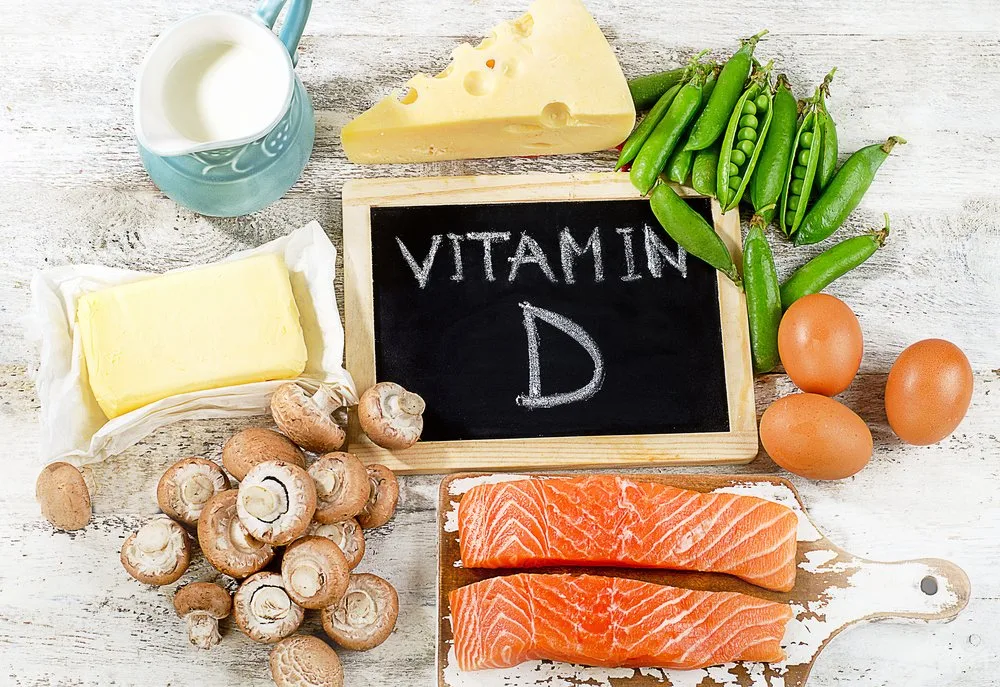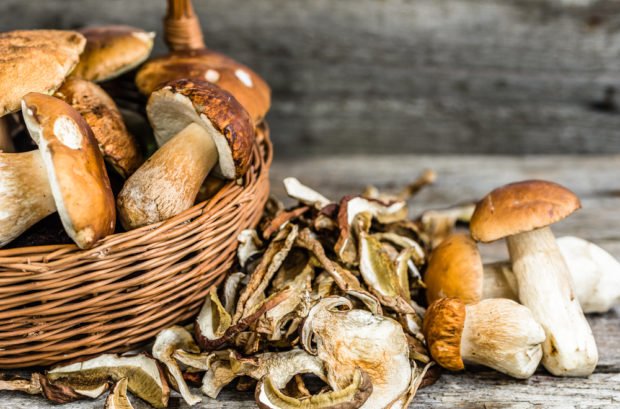Who doesn’t know someone who’s battled cancer? With millions dying from it every year, researchers are racing to find ways to help us cure, prevent, or even live with it. Epidemiologists Cedric Garland and his late brother Frank dedicated their lives to the cause. They believed that vitamin D could prevent many types of cancer, and they spent decades conducting studies to prove it.
High levels of vitamin D
It all started in July of 1974 during a presentation at Johns Hopkins University. A Los Angeles Times article (1) honoring Frank’s life stated that “the Garlands were ’startled’… by maps showing that rates for breast and colon cancer mortality rates were twice as high in many northern counties compared with those in the southwest.”
Researchers had no explanation for this effect, but the Garlands believed it was due to high levels of vitamin D from all the sunshine in the southwest. According to the same article, Frank was also involved in a study of 25,000 volunteers, which found that people with the highest levels of 25(OHD) (a metabolite of vitamin D used to measure levels of D in the blood) had 20% of the normal risk of colon cancer. (1)
Pretty impressive!
More recently, Cedric co-authored a study that solidified the connection between vitamin D and invasive cancers (except for skin cancer, which was not part of the study). Catharine Paddock, PhD summarized the results nicely (2):
“Women whose vitamin D level was 40 ng/ml or higher had a 67% lower risk of developing cancer than women whose vitamin D level was 20 ng/ml or lower.”
Wow! So why aren’t our doctors encouraging us to use vitamin D to prevent cancer? Before we dive into that question, let’s take a closer look at vitamin D.
What is vitamin D?
The first thing you need to understand about “vitamin” D is that it’s much more than a vitamin. Depending on whom you listen to, it’s either a hormone or a collection of prohormones (substances the body converts to hormones). Either way, we don’t function well when we’re deficient. According to an article in BrainMD (3), we’d be lost without it. Here are just some of their reasons:
- Immune cells contain vitamin D receptors, and we know that vitamin D deficiency is one of the reasons that winter is the cold and flu season.
- Lower levels of vitamin D are linked to higher blood pressure, and high blood pressure increases the risk of having a heart attack.
- Vitamin D helps regulate kidney function.
- We need vitamin D to absorb calcium properly, making it essential for strong bones.
- It strengthens our muscles and improves the health of our lungs.
- It helps to prevent depression.
- Vitamin D helps the brain get rid of beta-amyloid, a protein believed to play a major role in Alzheimer’s disease.
- It even helps keep our weight down! Vitamin D deficiency can prevent leptin (the appetite hormone) from doing its job properly. If your levels are low enough, you will feel hungry all the time – no matter how much you eat.
In fact, they say that research has linked vitamin D deficiency to over 200 diseases!
So how could this vitamin prevent deaths?
Those prohormones also play a role in controlling cell growth, which is one of the reasons scientists have been studying its potential ability to control cancer. JoEllen Walsh is a professor and researcher at the State University of New York at Albany’s Cancer Research Center. She believes that vitamin D generates a compound that binds to a protein receptor that regulates many cellular functions. In laboratory research, exposing cancerous cells to the active form of this compound kills them. (4)
While killing cancer cells in a lab is pretty exciting stuff, it’s not the same as preventing cancer in a human body. And that brings us back to our earlier question: Why aren’t we all using vitamin D to prevent cancer?
While the Garland brothers have crunched some pretty amazing numbers for both bowel and breast cancer, the results are less than stellar for other cancers. For instance, D doesn’t seem to offer protection against oesophagal cancer, which is what killed Frank Garland.
Research shows
And consider the work of scientists at the German Cancer Research Center, who have been investigating the role of vitamin D in cancer for over 20 years. Their latest research (5) suggests that a daily dose of vitamin D could reduce cancer mortality by a mere 12% – a far cry from the Garlands’ numbers on breast and bowel cancers.
Findings also vary depending on what the research measures. That study conducted at the German Cancer Research Center found that a daily dose of vitamin D reduced cancer mortality. Taking it less frequently (presumably in higher doses) didn’t do the job. Few studies take this into account in their design. And it’s possible that many haven’t used enough supplemental D to get a significant result.
Then there’s the fact that some studies focus purely on supplementation while others measure blood levels. Supplementation is only one factor in vitamin D production, especially in sunny parts of the world.
Research varies in other ways, too. The best studies use the most appropriate methods and account for other factors that may influence the results. When looking at cancer and vitamin D, this would include diet and exercise, as well as anything that might affect an individual’s response to increasing 25(OHD) levels in the blood. That might mean measuring BMI (body-mass index); weight gain increases inflammation, which D helps to reduce.
Given the complexity of the human body, it’s impossible to create the perfect study.
How much do you need to prevent illness and stay in excellent health?
Unfortunately, experts don’t agree on how much vitamin D we need or whether to supplement.
In 2010, the Institute of Medicine (IOM) recommended the equivalent of a target of 20 ng/ml for bone health, which could be met in most healthy adults (aged 19-70), with the equivalent of 600 IU of vitamin D each day to protect bone health. (2)
But a recent study of invasive cancers suggests a higher level to prevent cancer, at least for women. As Paddock pointed out, women “whose vitamin D level was 40 ng/ml or higher had a 67% lower risk of developing cancer than women whose vitamin D level was 20 ng/ml or lower.” (3)
That’s twice as high, or 1200 IUs a day. Some groups believe the optimal level is even higher.
So how do you get that much vitamin D? You can start with the sun. If you have light skin, you could get a reasonable amount of D in less than half an hour a day (though not during the winter months, and not if you’re too far from the equator).
But if you’re dark-skinned, it could take a few hours to get the same amount. Animal products like fatty fish and eggs are the main food source, but you’d have to eat a lot of them, every day, to get to the higher levels.
You could take a supplement. But if you’re on any medication, you should speak to your doctor first. Vitamin D supplements can interfere with the effectiveness of your meds. Fortunately, you don’t have to supplement if you’re willing to put in a little effort. If you want to up your D, there’s a clever little hack you can use… if you like mushrooms.
How to Get All the Vitamin D You Want Without a Supplement
We aren’t alone in our ability to synthesize vitamin D from the sun; mushrooms do it, too. Wild mushrooms that have seen some sun often have more vitamin D per serving than animal products. They won’t get you to 1200 IUs a day, but that’s OK. You can send the vitamin D levels of any mushroom, even those store-bought ones that never saw a single ray of sunshine, through the roof.
How? Just expose them to the sun!
Even after they’re picked, mushrooms continue converting UVB rays from the sun into vitamin D. Mushroom guru Paul Stamets tried an experiment with shitake mushrooms. (6) He found that exposing them to six hours of sunlight a day for two days increased their D levels from 100 IU per 100 grams to 46,000 IU. No, that’s not a typo: two days in the sun increased vitamin D levels by a factor of 460!
Stamets also found that the stems produced very little D and that levels dropped on the third day, presumably due to overexposure to ultraviolet light.
I don’t know about you, but I’m not keen on leaving my shrooms out all day to survive the elements. Fortunately, we don’t have to. In some more practical research (7), scientists explored the effects of exposing mushrooms to sunlight for much shorter periods.
100 g of fresh button mushrooms typically contain less than 40 IU (1 microgram) of D2. If they’re exposed to the sun for two hours (much less when the sun is strong), those levels can increase by a factor of 10. And slicing them to expose more surface area will get you even more.
At midday in mid-summer in Germany, sliced button mushrooms generated 700 IUs (17.5 micrograms) of vitamin D after only 15 minutes in the sun. After a total of 60 minutes, that level rose to 1300 IUs (32.5 micrograms). Now we’re talking!
The best part of all this is that Stamets stored his shitakes for nearly a year and measured their D levels a second time. He found that they still contained significant levels of D2. (Unfortunately, he didn’t share the numbers.) So if you’re motivated, you can buy your shrooms in the summer, slice them, give them a few hours of sun, and dry them to use in winter soups.
Isn’t nature amazing?
References
-
https://www.latimes.com/la-me-frank-garland-20100831-story.html
-
https://www.medicalnewstoday.com/articles/308834#Much-debate-about-recommended-level-of-vitamin-D
-
https://brainmd.com/blog/9-vital-functions-vitamin-d/
-
https://www.discovermagazine.com/health/what-do-scientists-know-about-vitamin-d-and-cancer
-
https://scitechdaily.com/daily-vitamin-d-consumption-may-reduce-cancer-mortality/?expand_article=1
-
https://fungi.com/blogs/articles/place-mushrooms-in-sunlight-to-get-your-vitamin-d
-
https://www.ncbi.nlm.nih.gov/pmc/articles/PMC6213178/




![women [longevity live]](https://longevitylive.com/wp-content/uploads/2020/01/photo-of-women-walking-down-the-street-1116984-100x100.jpg)










